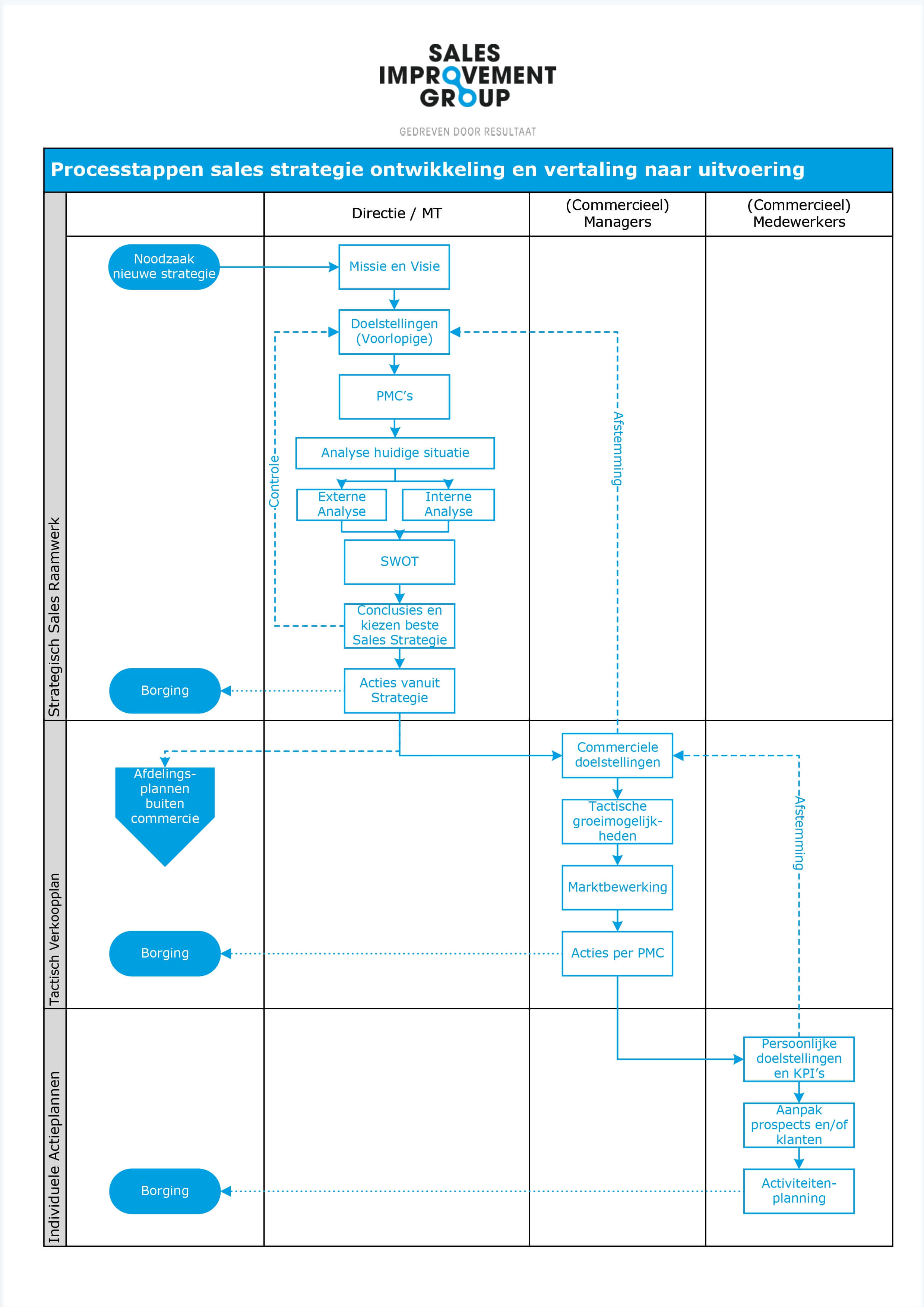What does a successful sales process look like?


Last update on: 1 Sept 2025
Reviewed by: ![]() Michel van Hesse
Michel van Hesse
There isn't just one definition of a sales process. The precise explanation varies from person to person. However, we can provide you with a general meaning of a sales process. A sales process is a predefined step-by-step plan that turns prospects or leads into actual customers. The exact sequence of these steps will vary from company to company. In brief, you can describe a sales process as mapping out what needs to happen and who will perform these steps.
Contents:
A sales process doesn't mean that every sales conversation must be conducted in exactly the same way. However, it is a way to bring structure to sales methods, leading to more successful outcomes. In fact, every company has a sales process, even if they haven't formally mapped it out. Mapping out the sales process can help optimize sales.

Documenting the sales process can be very useful for a salesperson or sales team. Not only does it make it easier to follow the process, resulting in more successful sales, but it also reveals where bottlenecks or areas for improvement in the process are. This can help prevent waste in the sales process. Additionally, salespeople can refer to the step-by-step plan when things don't go as expected.
While the exact sales process varies for each company, and there isn't just one sales process, there are some steps that appear in every sales process. We'll provide you with a model to start creating your sales process.
Certain steps are always present in a sales process. The exact structure and description of these steps may vary from company to company. Therefore, consider this sales process model as an example, but don't assume it's the only way. Always evaluate your own sales process critically and adjust the model based on your requirements and preferences.
Step 1. Lead generation and qualification
Before you can start selling, you need leads. These leads can be attracted in many different ways. This is usually the responsibility of the marketing team. Lead generation methods may include using social media, cold calling, attending trade shows, using the website, and more.
It's crucial that the leads attracted are of high quality and genuinely fit your company. Therefore, the marketing department will first create an ideal customer profile. This allows for a more targeted search for leads, attracting the right potential customers.
Even after attracting leads, you're not immediately ready to approach all of them. Lead qualification is still required. This means critically evaluating the leads and determining which ones are a good match for your company. Which leads have buying intent and are genuinely planning to become customers? Some lead qualification can be automated using sales tools, but a lead can also be qualified over the phone by a salesperson.
By properly qualifying leads, the sales team avoids wasting valuable time and energy on leads without buying intent.
Step 2. Discover customer needs
Now that you have some qualified leads, it's time for the next step in the sales process. Before you begin the actual pitch, it's good to get to know your potential customer better. By mapping out customer needs, you can better tailor the pitch to the customer. You can uncover customer needs by using a set of standard questions. The exact questions will depend on your product or service.
When discovering customer needs, also pay attention to possible objections the potential customer may raise. Thinking about these objections will allow you to respond effectively.
Step 3. The Pitch
Now that you know who your customer is and what their needs and objections are, it's time for the actual sales meeting. There are many ways to prepare a sales pitch, but the most important thing is to engage in a conversation and remain authentic. You understand what's going on with your conversation partner and how your product or service can help. Stay true to yourself and ask plenty of questions.
During the sales meeting, you may likely encounter objections from the prospect. Because you prepared for this in step 2, you can respond adequately and address the objections. At the end of the pitch, make a clear arrangement for follow-up.
Step 4. Making a Proposal
Did your conversation partner have some questions you didn't have an immediate answer to? Make sure to follow up on these quickly. Then, it's time to put the proposal in writing. Again, consider the possible objections that may arise.
Step 5. Closing the Deal
After making the proposal, the most exciting moment has arrived. Hopefully, the customer will now make the purchase. Ensure there's not too much time between making the proposal and actually closing the deal. Ideally, do this during the conversation.
Step 6. Handover to the Account Manager
If the customer is handed over to another team after the deal is closed, ensure a smooth handover. The account manager needs all the information to maintain contact with the customer. Documenting all the steps of the sales process can be helpful in this regard.
Step 7. Evaluation
The sales process is not static but constantly evolving. Certain steps may need to change or be adjusted to make the process as optimal as possible. That's why regular evaluation of the sales process is important. This way, the sales process keeps getting better, making it even easier and faster to acquire new customers.
The model above is not the only way to create a sales process. Sometimes steps will be merged, aspects need to be added, or some steps may require less attention. This also depends on who is creating the sales process. The sales process of an account manager will look different from that of a salesperson primarily focused on cold calling.

We'll provide you with a few tips to help you document your sales process as effectively as possible.
The implementation of a sales process differs for each company and even for different roles. Therefore, it's not always useful to use a sales process template. Even a pre-filled flowchart is not useful for this reason. It's more practical to create your own sales process on paper, so you can critically evaluate each step. You can look at examples to get an idea of the possible steps to include.
If you need assistance in developing an effective sales process, please contact one of our sales experts. We'll help you critically review your sales process. This will give you a better understanding of the steps that are already working well and where the bottlenecks and improvement opportunities are within the process. This will certainly benefit your sales.
Check out our roadmap for the sales process:
